He could be charming and witty, but also devious and cruel, said aides closest to Franklin Roosevelt.
-
Summer 2023
Volume68Issue4
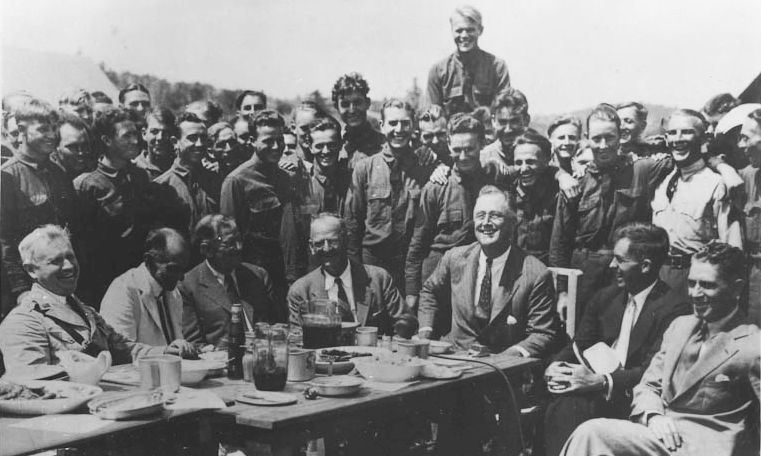
Editor’s Note: Derek Leebaert is the author of several books on American history and the military, including Unlikely Heroes: Franklin Roosevelt, His Four Lieutenants, and the World They Made. He is a founder of the National Museum of the United States Army.
No presidency is more shrouded in myth than Franklin Roosevelt’s. We read, for instance, of his commitment to Black Americans, yet nothing is told of his having personally blocked the anti-lynching bill from becoming law — as he did in the Oval Office, on January 2, 1940. Or we hear of an “epic friendship” with Churchill, although little evidence exists of any attachment on FDR’s part.
Likewise, biographies tend to reflect the newsreel and fireside-chat imagery of an insouciant Edwardian gentleman — roaring laugh, head thrown back — who made even the grimmest of difficulties look easy.
Yet Roosevelt had a tortured soul, said Frances Perkins, the Secretary of Labor, who herself was deeply unhappy. She was the high official who had known him longest, since the years before polio struck him in 1921 when, she recalled, he could vault casually over a chair, like a “beautiful, strong, vigorous Greek god king of an athlete.”
Blue-eyed Missy LeHand, his private secretary beginning that year, was closest to him of all. She observed that he “was really incapable of personal friendship with anyone.” Cousin Daisy Suckley, with whom he formed a deep relationship, wrote in her diary of his shrieking nightmares. The Secret Service was so accustomed to his screams that they didn’t race into his bedroom.
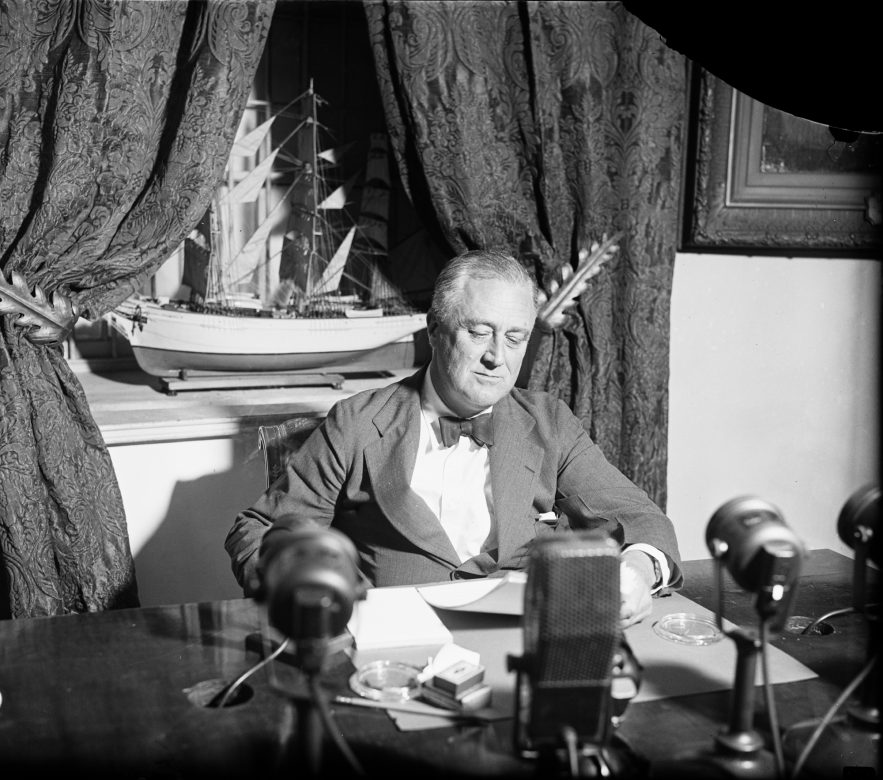
It’s no accident that the acutest perceptions derived from women. Perkins added that Roosevelt was “a peculiarly lonely person,” with no male friends, anyway. He might call the entire country “mah friends,” but his chums were just ones of “propinquity,” as she put it. They were acquaintances from boarding school and Harvard or Yale, perhaps with roots in the Hudson Valley, the sort of men who did not bother themselves with the sordid doings of Albany or Washington.
Read also: "FDR's New Deal" by Douglas Brinkley
For a dozen years, Roosevelt overcame his suffering to lead the nation, from his inauguration in March 1933 until he died in April 1945. Democracy was saved during the Great Depression, and civilization rescued in World War II. On that first Inauguration Day, the presiding minister intoned, “Thy servant, Franklin, about to become President of these United States,” using the plural in a then-familiar way for the republic. When his presidency ended, the adjective would be dated, and the United States stood triumphant in 1945.
Still, it has been hard to grasp how all that occurred. The man and the presidency have been equally opaque, and historians often unhelpful. That’s apparent in the History Channel’s 2023 docudrama miniseries, FDR, which is heavy with make-believe. Starting with the trailer, for instance, in which Doris Kearns Goodwin speaks of FDR’s “humility.” However, those who dealt with him, as did General Dwight Eisenhower, concluded that he was “almost an egomaniac.” Attempts to explain how FDR led his administration have been just as muddled. Another historian, H.W. Brands, has insisted that FDR didn’t use his cabinet, and that, besides, none of those top officials were themselves friends. It’s the opposite of what occurred.
In fact, as the superb Roosevelt scholar Susan Dunn recently concluded, a “collective leadership” of three men and one unprecedented woman — Perkins — comprised the tough, liberal core of his administration from the beginning to the end. By no coincidence, each was as crippled, in different ways, as was the president who appointed them. They called themselves friends, and — in peace and war — it would have been exceedingly difficult for FDR to accomplish what he did without them. Reporters sometimes referred to them as the “dictators” of the New Deal.

Close advisor and later Secretary of Commerce Harry Hopkins was not only ravaged by ulcers and the removal of two-thirds of his stomach after a cancer operation, but he was driven by a self-destruction seen in his flushing down of medicines and nutrients. Secretary of the Interior Harold Ickes was bipolar, by any diagnosis, medicating himself on Nembutal and whiskey. There were many days when he simply could not speak. Labor Secretary Frances Perkins was wracked by loneliness and physically pained to see her picture in the paper. Secretary of Agriculture Henry Wallace, said the New York Times, had an intellect that was “freakish.” His awkwardness could distance him from people, and he likely suffered from Asperger’s syndrome. But, said Eleanor Roosevelt, her husband felt truly at ease only among the world’s castoffs. This has gone largely unnoticed by historians and journalists who write of FDR.
Studies of a presidency are certain to be imprecise if one doesn’t grasp the basics of how it was led. Overlooked, as well, has been the key role of John Garner from 1933-1941. This former Speaker of the House from Uvalde, Texas was the most formidable vice president since the days of Adams, Jefferson, and Burr. Garner was the master legislative strategist of his generation. That bears heavily on FDR’s success. He was also the right man to send to face Hirohito in Tokyo in 1934, after Japan invaded Manchuria and, as we’ll see, he was the most outspoken figure in the Cabinet Room in his denunciations of lynching. But, among nearly all historians, it’s as if he never existed, except as caricature — “Cactus Jack,” a nickname no one used, except the Eastern press.
Penetrating the clutter of books and documentaries which repeat the FDR folklore is difficult. In this miniseries, as in the historical writings of its commentators, color is often preferred to fact. Therefore, it’s timely to offer an original account that might better reveal Roosevelt's character, while shedding new light on his presidency, as well.
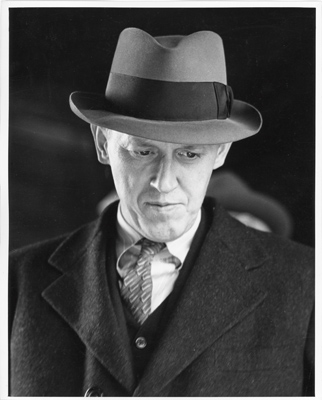
Dubious Temperament, First-Class Intellect
Joe Biden, who came to office citing FDR as a model for uniting our troubled country, will be the last president born during Roosevelt’s lifetime. Above the fireplace in the Oval Office hangs a portrait of a somber FDR. But to invoke the New Deal is implicitly to summon larger-than-life saviors, above all Franklin Roosevelt. Surely, that’s not how America at its best should work.
Two reasons explain the mis-remembering of FDR. First, paradoxically, historians have always focused the spotlight on the titanic leader himself, while knowing relatively little of his four closest associates — Frances Perkins, the de facto “secretary of public welfare,” Harry Hopkins, the immensely powerful Secretary of the Interior Harold Ickes, and Henry Wallace, who ran the biggest government department, Agriculture, and followed Garner as vice president in FDR’s third term.
For twelve years, the four pooled their impressions of FDR. When the spotlight is moved to shine on their nearly day-to-day work with him — and on their trove of oral histories, diaries, and papers — a significantly different picture of Franklin Roosevelt emerges.
Second, for a lifetime, writers have largely repeated the findings of the New Deal historians, adding not much more than new anecdotes. These are the iconic books by Robert Sherwood (1948), Frank Freidel (1952, 1954, 1956), Arthur Schlesinger, Jr. (1957, 1958, 1960), and James MacGregor Burns (1956). They tend to be glowing. None, for example, cite FDR writing to a senator from Montana that “Jack Garner ... could not get the nigger vote” or telling a staffer that the West Indies needed to produce more than “sugarcane and niggers.” Readers wouldn’t know that he used the slur casually at a time when decent people already did not. With an exception or two, that habit goes unreported in all history books.
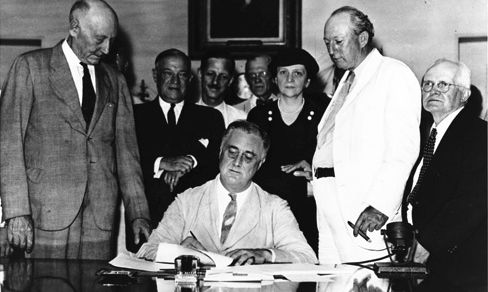
Much else has been left out of the FDR histories. For instance, Harold Ickes’s three-million-word diary reveals that FDR tracked who was Jewish among his officials, as he did when Ickes wanted him to appoint Abe Fortas, a brilliant young lawyer, to be Undersecretary of the Interior.
The extent to which the early writings on FDR get parroted is shown by tracing a simple error in Sherwood’s Roosevelt and Hopkins. Sherwood was close to Hopkins and knew that Hopkins wanted the president to be his best man at his July 1942 wedding in the White House. Sherwood wrote mistakenly in his Pulitzer-winning account that FDR in fact was Hopkins' best man. This is repeated in other history books right up until today, as by journalist Joseph Lelyveld, in a book on the last months of Roosevelt’s life (2016), and by the latest Hopkins biographer David Roll (2019). However, a day after the wedding, The New York Times reported the best man to have been Hopkins’s son David.
In echoing the classic works on FDR, historians neglect more recent findings, thereby perpetuating that Edwardian image, replete with FDR’s Anglicized, non-rhotic accent. Instead, FDR’s startling intellectual power can be seen through the eyes of those four lieutenants. One of them, Henry Wallace, was a brilliant agronomist and econometrician who spoke with Einstein and the great economist John Maynard Keynes nearly as an equal. It says much that the brilliant Wallace was impressed by FDR’s keen mind — regarding him as unsurpassed on questions of climate and geography, about which Wallace himself knew much. A few biographies acknowledge Roosevelt’s fluency in French, and some note a command of German that allowed him to translate Nazi broadcasts in real time. None reveal the ease with which he read Spanish, or his conversational Dutch.
In its place, we read simplifying accounts of Roosevelt being a “traitor to his class,” a charge his enemies had flung, and which is used as a book title by H.W. Brands (2008). But it was essential to FDR’s self-belief that he was well above matters of social class, having descended from early settlers in what had been New Amsterdam. To him, being a member of the lineal Holland Society in New York represented something gloriously distinct from being merely monied, like, say, Winthrop Aldrich, chairman of Chase Manhattan, the world’s largest bank.
It’s all the stranger to view FDR as “Anglo-Saxon.” Some historians still have that misconception, which was commonplace in London at the time. Yet “Anglo-Saxon” is a strange way to describe someone named “Delano Roosevelt.” The “home country” of which he often spoke was the Netherlands. He had no affection for the British Empire, and looked forward to its dissolution. “Epic friendship” is another book title, this one by Jon Meacham (2003). The characterization arises largely from FDR’s voluminous wartime correspondence with Churchill. It is forgotten that each man knew history to be looking over his shoulder, and that both were composing for the record.
The unifying factor of Franklin Roosevelt, whether seen in his dealings with Churchill or just about any other man, was his will to power — and a consistent assertion of primacy. He could persuade himself that everything he was doing was for the best. During the Roaring Twenties, he could brush off the dodgy stock promotions by his law firm (Roosevelt & O’Connor’s other partner concluding that “the public are suckers and likely to continue so”). As president, he used the Internal Revenue Service relentlessly against his enemies.
Read also: "FDR's War with Polio" by Geoffrey C. Ward
All was fair, in FDR's opinion, because no one had more to contribute than he; no one had a greater desire to “protect the economic welfare of all the people.” Yet he had to exert a lot of effort to maintain his cheery exterior, and his effectiveness. John Boettiger, the Chicago Tribune newsman who married FDR’s only daughter, Anna, in 1935, worked closely with his father-in-law. Boettiger — who had plenty of his own troubles, eventually hurling himself from the seventh floor of a New York hotel — remarked that Roosevelt’s strongest emotion was the rage of a “cripple” toward the healthy.
Boettiger may have exaggerated Roosevelt’s “rage,” but he had singled out the troubling emotion. Roosevelt’s interior had much room for envying others, and resenting them. Many of his contemporaries, such as Winthrop Aldrich, had succeeded in business where, at Roosevelt & O’Connor, he had not. The hostility this aroused in him is reflected in his insistence when president that, given a lifetime of experience with businessmen, he had learned that “they were generally very stupid.” Regardless, great leaders such as Roosevelt excel at hiding their feelings. It took courage, essentially a triumph of the spirit, for him to appear so blithe.
Still, Roosevelt lied almost reflexively, even when there was no reason — and he did so with that carefree air. Harry Truman, who entered the Senate from Missouri in 1935, to become VP for the brief fourth term, simply remarked of the president, “He lies.” Why? Lying was a means of Roosevelt’s asserting primacy. Powerful men had to sit opposite him and listen to what both knew to be untrue, or at least they would soon enough recognize that they had been lied to.
His two-faced statements went far beyond the habits of a chief executive who chooses to manage his administration by provoking rivalries among his subordinates. Once more, it is make-believe for Goodwin to write that FDR had an effective “style” to elicit “conflicting opinions” from the infighting. At best, she’s echoing historians of the 1950s who lauded him for exercising some form of considered direction.
Yet, according to Perkins, “even the average Sunday-school superintendent had a better conception of organizing and executing a program” than he. Roosevelt would not have recognized the word “management,” and if it had come his way, it would have meant to him simply exercising power over others.
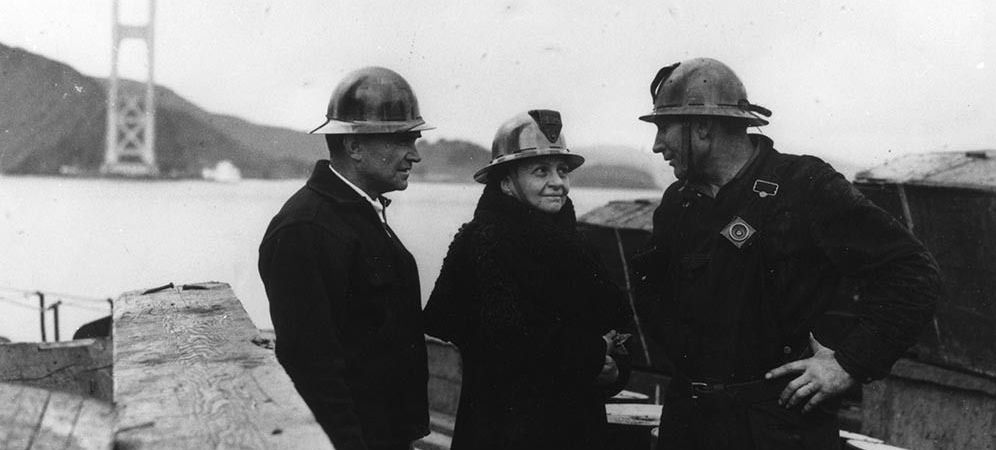
Happily, each of the four whom he had selected and allowed to soar was a superb administrator, as he anticipated with his startling intuition when he appointed them. But they each experienced his petty cruelties and disparagements, even Perkins. Just one instance occurred during a week in May 1935, and Roosevelt’s behavior had a purpose.
He had approved two unremarkable speeches that Ickes and Wallace were to give in Philadelphia and Boston, respectively. Several days later, he summoned Vice President Garner, the Senate majority leader, the Speaker of the House, and Secretary of State Cordell Hull to an urgent meeting, largely to decry the political harm Ickes and Wallace had just inflicted by their statements. He could get such a gathering to roar with mirth over men whom they knew well. Once they left his study still chuckling, they likely felt sheepish. Again, they had been put under his thumb.
Behind such performances was no “inner well of serenity” to Roosevelt’s soul, as historians like Schlesinger have long argued. Decidedly, there was a childish side to Roosevelt, which even those four lieutenants who were closest to him couldn’t figure out. Wallace described him as “a veritable Peter Pan,” and, like Peter Pan, FDR saw himself in the middle of excitements and adventures. He was also startlingly brave, to recall the icy courage he displayed in Miami after an assassination attempt in February 1933, weeks before becoming president. Similarly, he displayed a preternatural calm on December 7, 1941, when the Navy Secretary telephoned to inform him of Pearl Harbor.
Read also: "Francis Perkins Brought You the Weekend" by Bruce Watson
The shortfall in the many decades of examining FDR is underscored by a long-unanswered mystery of that terrible afternoon and evening. Why did he meet throughout with his cabinet, congressional leaders, and military commanders while sitting in his second-floor study — eschewing the solemnity of the Cabinet Room, or the stateliness of the Oval Office, for these gravest of meetings?
Here too is a basic matter of FDR’s presidency which historians have mishandled. His choice was deliberate. By remaining in the family quarters, he was again asserting primacy, and this time, it was his intention to personally lead the fight. What followed became “Roosevelt’s private war,” as lamented Republican Arthur Vandenberg, ranking member of the Senate Foreign Relations Committee. No surprise, and Roosevelt proved a superb warlord, with a startling mastery of logistics and strategy.
How Character Shaped Policy
Throughout his presidency, Roosevelt rarely took steps if they undercut a ruthlessly self-centered drive for power. It can be said that all great politicians are ruthless, but FDR went further than other American statesman. His handling of New Deal reforms is the mildest of examples of a self-centered character, with far-worse instances to come as the top four aides around him lost any faith in his dedication to civil liberties.
Roosevelt liked to see his people do well and to innovate. But an aversion to political risk combined with his uninterest in the particulars of most any policy initiative. OK, go do it, he typically said to one or another of his lieutenants; and, he would add, according to Perkins, “if it doesn’t work, the blood will be on your head.” Contrary to how the Social Security Act of 1935 is depicted by the History Channel and its experts, Roosevelt had nothing to do with it, other than having appointed Frances Perkins. One pivotal Senate staffer who had helped to shepherd the legislation through committee observed, “I don’t think that President Roosevelt had the remotest interest in a Social Security bill or program. He was simply pacifying Frances.” Still, FDR was president, so historians just assume he was pushing for this singular accomplishment.
His approach was similarly hands-off on the right of workers to organize. To be sure, he felt sympathy for the downtrodden: miners, assembly-line workers, small farmers, Blacks. But always, a vote-counting machine was whizzing in his head. Toward the labor unions, which New Deal legislation helped to empower, he held a genteel skepticism. His attitude toward the movement was a patrician one, like that of Britain’s lord chancellor, F. E. Smith, fifteen years earlier, who observed that he had never encountered men stupider than those who led the mine workers, until he met the mine owners.
Other shrewd politicians, like Vice President Garner, picked up on FDR’s combination of lying and ruthlessness. By the end of the second term, both parties on Capitol Hill distrusted Roosevelt. But voters stuck with him, in part because the Republicans had little to offer during the 1930s, other than calls for “rugged individualism,” denunciations of “socialism,” and, before long, their own limply echoed version of the New Deal.
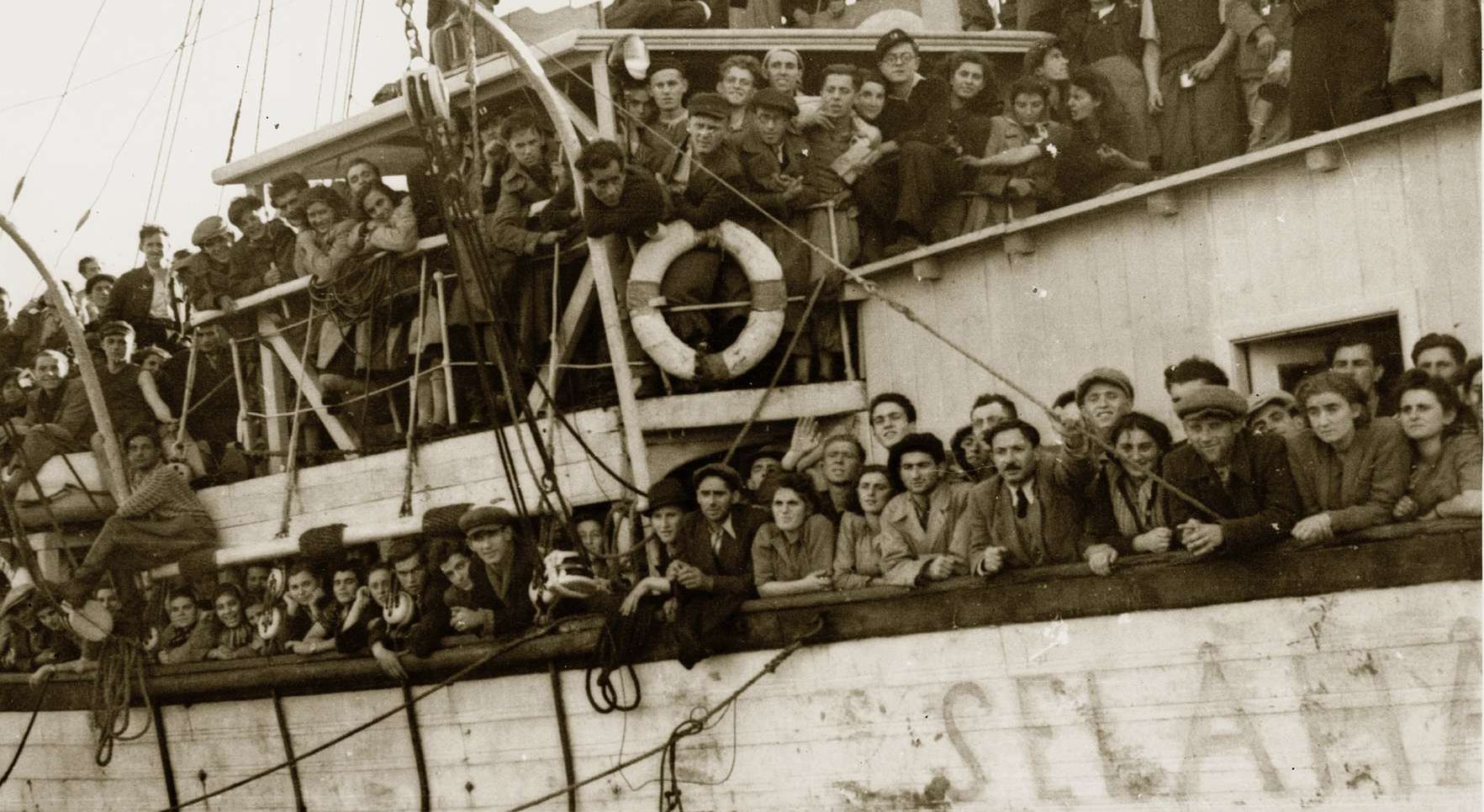
Concerning labor strikes during the war, FDR would be unnecessarily ferocious. His threats of using the army to force striking miners to dig coal were popular with voters who were furious at the United Mine Workers for obstructing the war effort. But his bluster went nowhere. A cooler approach to contract negotiations by Ickes and Perkins is what kept up the vital production.
On the cusp of war, and into America’s first year of combat, the searing example of that self-centered ruthlessness is seen in his response to Jewish refugees fleeing Nazism. Anti-semitism in the State Department is not the story of why America did relatively little in granting asylum. Roosevelt totally controlled the State Department for twelve years, and appointed his deeply bigoted friend, Breckinridge Long, as assistant secretary, to supervise the Visa Division. FDR could have transformed the department to his liking at any time.
Even sadder, he personally blocked specific rescue attempts by not even allowing escape to the territories of Alaska and the Virgin Islands. The political controversy was minor, but Roosevelt just didn’t want to take risks. Interior Secretary Ickes lambasted him by stating publicly that “the right of asylum for political refugees, of which this country used to be so proud, has been allowed to die.”
In October 1942, Ickes revived hopes about the Virgin Islands becoming a refuge, and he wrote to FDR urging that the territory might help save even just a thousand Jewish children. The president’s written reply asked him to speak to the State Department “in regard to the Jewish children” — which meant slamming the gates once more. On this tragic subject, Ken Burns’ 2022 documentary, The U.S. and the Holocaust, is misleading.
There was no more “context” here — beyond FDR’s personal political convenience—than in his obstruction of the anti-lynching bill.
The tragic wartime imprisonment of 125,284 Japanese-American citizens and residents, which FDR imposed during the weeks after Pearl Harbor, has been well chronicled. Neglected, however, has been his refusal — despite fierce objections by Ickes about a “lynch-mob mentality” — to end the notorious West Coast General Exclusion Order in 1944. By then, no remote military purpose existed for continuing internment, as FDR knew. Still, he refused to lift his order until after the November presidential election. That was no surprise to Ickes.
FDR was meanwhile running the war with pivotal help from these four Cabinet members, who were the domestic counterpart of his four top military commanders: mobilizing the female workforce, as did Perkins; Hopkins serving as politico-military advisor; Ickes getting six billion barrels of U.S. oil into the fight; Wallace laying out the republic’s war aims in the most important of American wartime speeches, 1942’s “Century of the Common Man.” But America fought with a segregated army. FDR concluded that “the Negro is inferior in combat” — presuming himself an expert because of what he had observed of Senegalese troops on World War I’s Western Front. What progress was made for Black fighting men, as for Black nurses, occurred despite him.
Any assessment of FDR’s character must return to his stance on lynching – the South’s prime instrument of night-riding terror to oppress ten percent of the U.S. population. It is a myth, as is still presented this year in the New York Review of Books, that “the power of the Jim Crow South in the Democratic Party … made it impossible to enact federal anti-lynching legislation.” Such was FDR’s excuse. Yet the motives of any politician invite us to think twice, and, until now, the story of FDR quashing an anti-lynching act has not been told.
All was set in 1937, 1938, and 1940 for the crime of lynching to be federalized, as kidnapping had been in the so-called Lindbergh Law of 1932. At issue wasn’t Jim Crow and states-rights-as-usual: Mobs inflicting medieval torture — which Life magazine used photographs of two weeks after the Duck Hill, Mississippi, blowtorch killings of April 1937 — was something else.
Gallup polling indicated that most Americans wanted an anti-lynching law, including white Southerners. Enlightened Southern organizations such as Women for the Prevention of Lynching were determined and, in Tennessee, a popular governor was offering enormous rewards to convict lynchers. Moreover, that famed Tennessean, Secretary of State Cordell Hull — immensely respected on Capitol Hill — was ready to weigh in.
Additionally, there was the campaign cash. South Carolina financier Bernard Baruch jumped at FDR’s requests, and Baruch had long funded fifteen or so Southern senators — so heavily that insiders called them the “Baruch string.”
Secretary of Commerce Daniel Roper, another bigshot in South Carolina, was willing to move. Above all, so was Vice President John Garner, an implacable enemy of the Klan. Only Garner’s Texas protégé Jesse Jones rivaled him as a fierce opponent of lynching, and Jones’ huge funding agency, the Reconstruction Finance Corporation, administrated thousands of loans throughout the South. Notwithstanding, there was no direction from the top.
Anti-lynching bills were filibustered to death in 1937 and 1938 after passing the House. On January 2, 1940 in the Oval Office, Garner gave FDR a pathway through the Senate. No one ever doubted Garner’s word. Additionally, he led the strongest delegation any state has ever sent to Washington and, on that day, he was accompanied by Speaker of the House John Bankhead of Alabama, Senate Majority Leader Alben Barkley of Kentucky, and another Garner protégé, Texan Sam Rayburn, House Majority Leader.
Garner laid out the strategy for an anti-lynching act by the spring. FDR stopped the effort cold. Always, he had other priorities — expanding the Supreme Court in 1937, purging his own party in 1938, and winning a third term in 1940. Two weeks earlier, Garner had declared a run for the White House, to become the Democratic favorite, assuming that FDR would not break the two-term precedent. If the bill had passed, Garner would have gotten the credit among Blacks in the North (who could vote) and whose votes in Chicago and New York City could shift elections. FDR didn’t need the grief.
As the young Clarence M. Mitchell, Jr. — later one of the NAACP’s most revered officers — observed, the congenial, liberal-minded president needed to find the backbone to defend all Americans.
Read also: "FDR Unites America for War," by Peter Shinkle
To be sure, Roosevelt had courage. He just kept listening to that noisy voting machine in his head, and why take the risk, even if the count might be favorable?
Two policy issues that culminated in FDR’s last months of life — one domestic, one foreign — further illuminate the effects of his character on the nation.
In 1944, he called for legislation to conscript every able-bodied man (between 18 and 65) and woman (18 to 50) into “national service” for the war’s duration. He justified this notion of compulsory labor by claiming it was vital to the war effort. Closer to the truth, he said, was to “prevent strikes” and the threat of strikes. Compulsory civilian labor gave him a whip hand over the unions. Should a “National Service Act” come into being, moreover, there was no guarantee that such presidential powers would end with the war. He pushed a “National Service Act” so intensely that it became his sole idée fixe during this longest of presidencies.
Ickes and Perkins opposed this authoritarian overreach. Moreover, hardly anyone in Congress trusted Roosevelt with the enormous power envisaged in national service. On this matter, years of his deceptions, and of showing a character absent of humility, finally caught up with him. The Senate voted down his National Service Bill in March 1945.
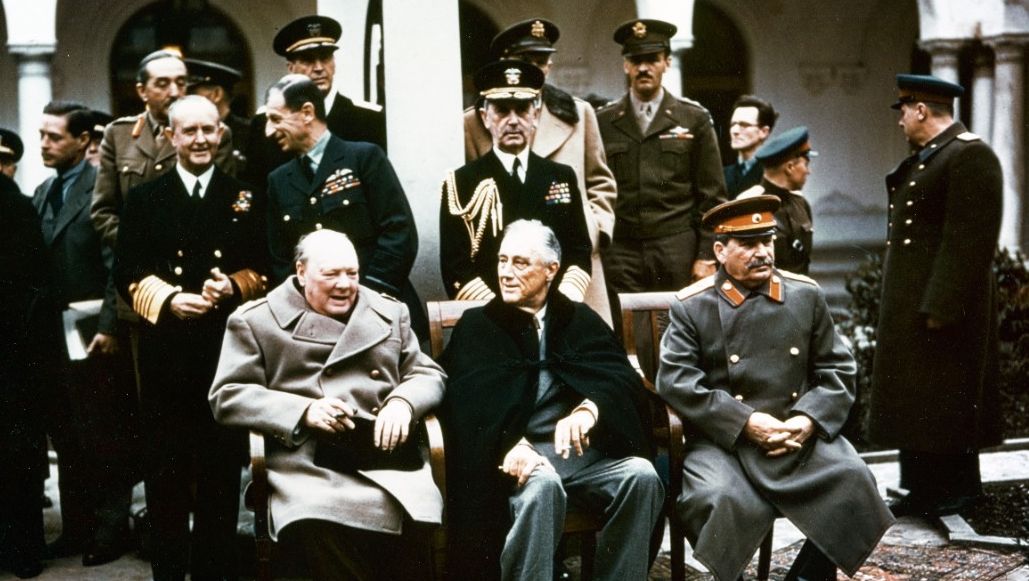
Three weeks earlier, Roosevelt had returned from Yalta, in the Crimea, where, in February, he met with Stalin and Churchill to address those nations and the regions that would erupt in the years ahead: the division of Germany; Iran, Greece, Turkey and the Balkans, the Middle East, then-French Indochina, and Korea. They also laid out the fate of Eastern Europe. Once home, he repeated gloomily to those around him, “It was the best I could do,” by which he meant accepting Stalin’s false promises of allowing democratic elections in Poland. Writers such as Joseph Lelyveld and many others have long argued that Roosevelt, again, had “no alternative” to having to acquiesce to Stalin’s takeover of Eastern Europe, most of which the Red Army had by then occupied.
They are correct, to an extent. Yalta culminated a series of U.S. blunders and concessions that went back to FDR’s previous meeting in December 1943 with Stalin and Churchill in Tehran. Throughout, Roosevelt assured aides that “Stalin can be handled,” that Stalin basically viewed the world as did he — in fact, that he could manage Stalin as he did Democratic party bosses in Chicago and Boston.
In his conceit, Roosevelt threw aside all leverage over Stalin, which he had never considered in the first place — despite advice from a keen advisor, William Bullitt, who had been his first ambassador to Moscow. And the leverage was considerable — to start, with the prospect of ratcheting back an overabundance of Lend-Lease aid being sent to the Soviet Union.
In Allen Drury’s 1959 novel Advise and Consent, as the funeral cortege approaches Union Station in D.C., the senior senator from Indiana tries to assess the dominant personality and forceful career of the unnamed president — a charming, theatrical, double-crossing titan, and clearly FDR. In the final analysis, he asks himself, was this a good man? The senator realizes that it will take generations to say with certainty.
So it is with Franklin Roosevelt. Great leaders, surely in a democracy, must possess some kind of remarkable allure, but they do not have to be nice. Roosevelt was a hero in the simplest sense: he aroused devotion in order to confront the worst dangers of peace and war, though he also had a big capacity to cause harm. Despite the chilling defects of his character — which Perkins, Ickes, Wallace, and Hopkins recognized intimately — he sincerely appealed to the “common sense of decency” in American life.
The 2020s raise uncomfortable parallels with those most world-changing of years of FDR’s presidency during the last century: social upheavals, climate extremes (the Dust Bowl), an urge to rebuild, and furious politics (the cry of “America First” in both epochs), while world disorder threateningly increases. Enduring the Great Depression and then surviving World War II was in many ways a close call for what became the United States.
Allen Drury, whose definitive novel of midcentury Washington won the Pulitzer Prize, had been a reporter for the United Press, covering the Senate and keeping a diary. He had a frightening realization in 1944 while walking the halls of Congress. According to his diary, he was shaken by how much America’s democracy “is founded upon good will — sheer human liking and the ability to get along together.”
Assessing Franklin Roosevelt and an era that was launched ninety years ago this month, with his “Hundred Days” of legislative reforms in June 1933, compels us to wonder if the country can again come through a time of such extremes.

